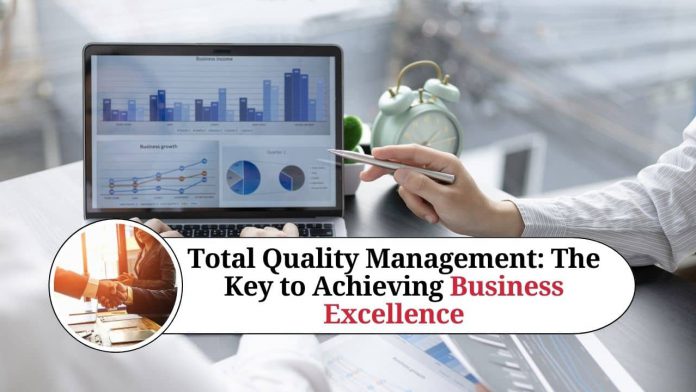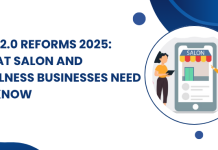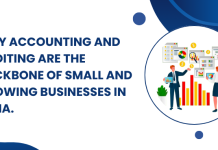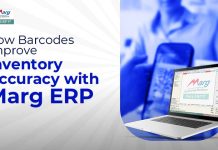In today’s fast-paced and highly competitive business world, companies need to focus on delivering high-quality products and services to stay ahead of the competition. Total Quality Management (TQM) is a management approach that emphasizes continuous improvement, customer satisfaction, and employee involvement to achieve business excellence. In this blog post, we will discuss TQM in detail and how it can help companies achieve success.
What is Total Quality Management (TQM)?
Total Quality Management (TQM) is a management approach that aims to improve the quality of products and services by involving all employees in the process of continuous improvement. TQM is based on the principle that quality is everyone’s responsibility, and that all employees must work together to achieve it.
The core elements of TQM include:
- Customer Focus: Understanding and meeting the needs and expectations of customers is the most critical aspect of TQM. This involves listening to customers, gathering feedback, and using it to improve the products or services.
- Continuous Improvement: TQM is a continuous process of improvement. It involves identifying areas for improvement and implementing changes to increase efficiency, productivity, and quality.
- Employee Involvement: TQM recognizes that employees are a valuable asset and encourages their involvement in decision-making, problem-solving, and process improvement.
- Process Management: TQM emphasizes the importance of managing processes to ensure that they are efficient, effective, and produce high-quality products or services.
- Leadership: TQM requires strong leadership to create a culture of quality, inspire employees to embrace the principles of TQM, and provide the necessary resources for continuous improvement.
Benefits of Total Quality Management
Implementing TQM has many benefits for businesses, including:
- Increased Customer Satisfaction: By focusing on the needs and expectations of customers, companies can improve the quality of their products and services, resulting in increased customer satisfaction.
- Improved Efficiency and Productivity: By identifying and eliminating wasteful practices, companies can improve their efficiency and productivity, resulting in cost savings and increased profitability.
- Better Employee Morale: By involving employees in the process of continuous improvement, TQM can improve employee morale, job satisfaction, and loyalty to the company.
- Competitive Advantage: By delivering high-quality products and services, companies can gain a competitive advantage in the marketplace, attracting and retaining customers.
Implementing Total Quality Management
Implementing TQM requires a systematic and comprehensive approach that involves all employees and stakeholders. The following are the steps involved in implementing TQM:
- Establish a Culture of Quality: The first step in implementing TQM is to establish a culture of quality by communicating the principles of TQM to all employees, and creating a shared vision of quality.
- Identify and Define Customer Needs: The next step is to identify and define the needs and expectations of customers. This involves gathering feedback from customers, analyzing it, and using it to improve the quality of products and services.
- Establish Quality Goals and Metrics: Once customer needs have been identified, the company must establish quality goals and metrics that can be used to measure progress and identify areas for improvement.
- Develop and Implement Process Improvement Plans: The next step is to develop and implement process improvement plans that address the identified areas for improvement. This involves using tools such as Six Sigma, Lean, and Kaizen to improve processes and eliminate waste.
- Empower Employees: TQM requires that employees be empowered to take ownership of their work and contribute to the process of continuous improvement. This involves providing the necessary training, tools, and resources for employees to be effective.
- Monitor Progress and Celebrate Success: The final step in implementing TQM is to monitor progress, track the results of the process improvement plans, and celebrate success. This involves recognizing and rewarding employees who have contributed to the success of the TQM initiative and sharing the results with all stakeholders to maintain motivation and engagement.
Challenges of Implementing Total Quality Management
While the benefits of TQM are significant, implementing this management approach is not without challenges. Some of the challenges of implementing TQM include:
- Resistance to Change: TQM involves a significant change in the culture and processes of the organization, and some employees may resist this change.
- Lack of Employee Buy-in: For TQM to be successful, all employees must be committed to the process of continuous improvement. If some employees are not invested in TQM, the initiative may not succeed.
- Lack of Resources: Implementing TQM requires resources, including time, money, and personnel. If these resources are not available, TQM may not be successful.
- Lack of Senior Leadership Support: TQM requires strong leadership to succeed. If senior leaders are not committed to TQM, the initiative may not receive the necessary support to be successful.
Tools and Techniques Used in Total Quality Management
Several tools and techniques are used in TQM to improve quality and efficiency. Some of these include:
- Six Sigma: Six Sigma is a methodology used to improve process quality by identifying and eliminating defects. It involves defining, measuring, analyzing, improving, and controlling the process to reduce variability and improve quality.
- Lean: Lean is a methodology used to eliminate waste and increase efficiency. It involves identifying and eliminating non-value-added activities to reduce lead time, inventory, and costs.
- Kaizen: Kaizen is a methodology used to improve quality and efficiency through continuous small improvements. It involves empowering employees to identify and implement improvements in their work processes.
- Total Productive Maintenance (TPM): TPM is a methodology used to improve equipment reliability and availability by involving operators in the maintenance process.
- Statistical Process Control (SPC): SPC is a methodology used to monitor and control a process by collecting and analyzing data to identify and eliminate sources of variability.
By using these tools and techniques, companies can identify and eliminate waste, reduce defects, and improve process efficiency, leading to increased customer satisfaction and profitability.
Conclusion
Total Quality Management is a management approach that emphasizes continuous improvement, customer satisfaction, and employee involvement to achieve business excellence. TQM involves a systematic and comprehensive approach to improving quality that involves all employees and stakeholders. While implementing TQM may present challenges, the benefits of this approach, including increased customer satisfaction, improved efficiency and productivity, and better employee morale, make it a worthwhile endeavor for any organization. By embracing TQM and focusing on quality, businesses can gain a competitive advantage and achieve success in today’s highly competitive marketplace.
Read more useful content:
- How to Save Tax on Salary
- Guide to Understanding Direct Taxes in India
- Filing Income Tax Returns
- GST E-invoice
Frequently Asked Questions (FAQs)
Q1.) What is Total Quality Management?
Total Quality Management (TQM) is a management approach that emphasizes continuous improvement, customer satisfaction, and employee involvement to achieve business excellence.
Q2.) What are the benefits of Total Quality Management?
The benefits of TQM include increased customer satisfaction, improved efficiency and productivity, better employee morale, and a competitive advantage in the marketplace.
Q3.) Who can benefit from implementing Total Quality Management?
Any organization, regardless of size or industry, can benefit from implementing TQM.
Q4.) What are the key principles of Total Quality Management?
The key principles of TQM include customer focus, continuous improvement, employee involvement, process approach, fact-based decision making, and leadership.
Q5.) How does Total Quality Management differ from traditional quality control?
TQM differs from traditional quality control in that it involves a comprehensive and systematic approach to improving quality that involves all employees and stakeholders.
Q6.) What are some of the tools and techniques used in Total Quality Management?
Some of the tools and techniques used in TQM include Six Sigma, Lean, Kaizen, Total Productive Maintenance (TPM), and Statistical Process Control (SPC).
Q7.) How can organizations implement Total Quality Management?
Organizations can implement TQM by creating a culture of continuous improvement, involving employees in quality improvement initiatives, and using tools and techniques to identify and eliminate waste and defects.
Q8.) How can senior leaders support the implementation of Total Quality Management?
Senior leaders can support the implementation of TQM by providing the necessary resources, setting a clear vision and goals for the initiative, and serving as role models for the rest of the organization.
Q9.) What are some of the challenges of implementing Total Quality Management?
Some of the challenges of implementing TQM include resistance to change, lack of employee buy-in, lack of resources, and lack of senior leadership support.
Q10.) How can organizations measure the success of their Total Quality Management initiatives?
Organizations can measure the success of their TQM initiatives by using metrics such as customer satisfaction, employee engagement, defect rates, cycle time, and productivity. It is also important to share the results with all stakeholders to maintain motivation and engagement.




















